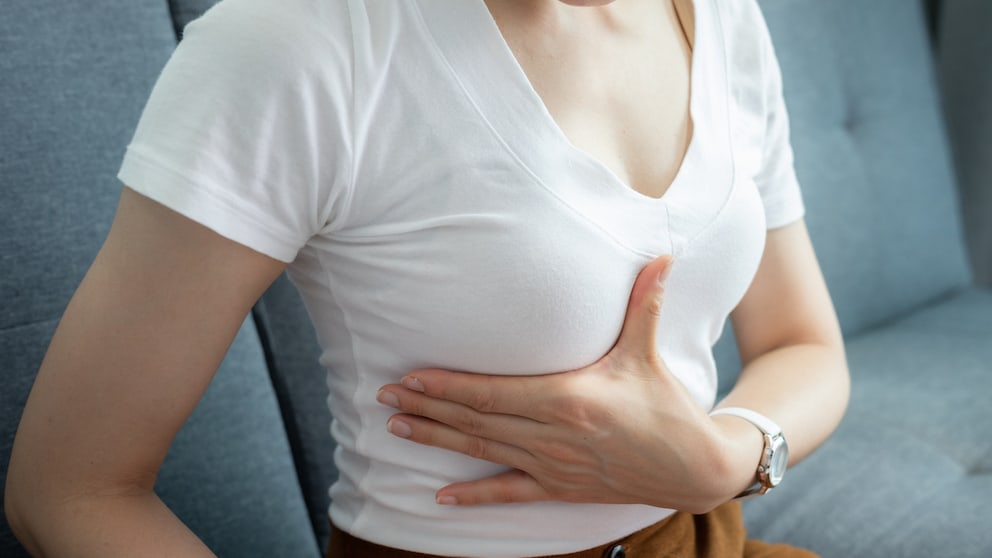October 19, 2024, 12:28 pm | Read time: 4 minutes
Many beauty trends are born in the USA, but not all of them should be followed, and if they are, then question them and inform yourself about the risks. Nipple injections, which are supposed to ensure perfectly erect nipples, definitely belong in this category. STYLEBOOK spoke to a specialist about the procedure and what you should definitely consider before deciding to have nipple injections.
Nipple injections – The procedure explained
Nipple enhancement with fillers follows a similar procedure to other filler treatments. The hyaluronic acid is injected under the skin of the nipple. This procedure creates a lasting increase in volume. Consequently, the nipple remains erect, independent of heat and touch, a feature some find particularly appealing. “Hyaluronic acid should be the treatment of choice here,” explains Dr. Markus Klöppel, an aesthetic specialist from Munich. “It is the world’s best, most widely used filler with the fewest side effects and is very effective. Given that the breast is an extremely sensitive organ, a fact well-known to women, the use of hyaluronic acid is ideal due to its minimal side effects.”
However, the treatment should only be carried out by an experienced expert. Plastic surgeons or dermatologists are safe contacts for this. “It must always be carried out by a doctor who uses carefully selected products, i.e., high-quality hyaluronic acid from reputable manufacturers. And someone who is familiar with the anatomical structure of the nipple in order to know where to place the needle.”
Injecting nipples: What are the risks?
Hyaluronic acid breaks down in the body after a while. Therefore, the effect of permanently erect nipples lasts only about three to six months, necessitating repeated injections. This increases the risks that women should be aware of with this beauty trend. “I think you have to remain critical of the risks and take them very seriously. Although there is no good empirical value yet, I do see a certain danger in terms of a woman’s ability to breastfeed,” the expert points out. Hyaluronic acid is not harmful per se and has no lasting residual effect as a substance.
As with any procedure, injecting the nipples can lead to general side effects such as swelling, redness, and bruising around the nipples. However, these symptoms should subside on their own after a short time. “There is also bacterial colonization of the milk ducts. While this typically poses no danger to the body, introducing a germ deep into the breast tissue with a needle can cause inflammation. In such cases, antibiotics must be used to counteract this,” says Dr. Klöppel.
Does the injection help with inverted nipples?
In this completely harmless form, the nipple is turned inwards. According to reports from the USA, the treatment was developed precisely for this purpose. Dr. Klöppel: “It makes perfect sense to create an effect on the inside with a filling so that the nipple can unfold outwards. However, injections can only temporarily improve inverted nipples.” There are also permanent inverted nipples, which are always turned inwards and do not come out when cold, touched, or aroused. With this permanent form, surgical nipple correction makes much more sense, as the problem here lies in the shortened milk ducts. These are cut during the procedure, allowing the nipples to protrude outwards.

The Best Pistachio Perfumes for Every Budget

Lola Weippert: “I Am Afraid When I Leave My house”

Hyaluronic Acid Against Wrinkles? Application, Effect, Risks
What does the expert say about nipple injections?
“The nipple, or ‘mamille’ as it’s known in medical terminology, is a significant concern. Particularly, small nipples are often considered an ideal, symbolizing youth. In breast operations, which I perform very frequently, we, therefore, make sure that the diameter of the areola does not exceed 36 millimeters,” says the specialist. Nipple enhancement by way of hyaluronic acid injections can elevate and tighten women’s nipples. This offers a less invasive alternative to a breast lift. Nevertheless, the risks should not be underestimated, and Dr. Klöppel strongly warns against taking this step rashly. For this reason, he does not currently perform the treatment in his clinic. The trend should be viewed critically.

